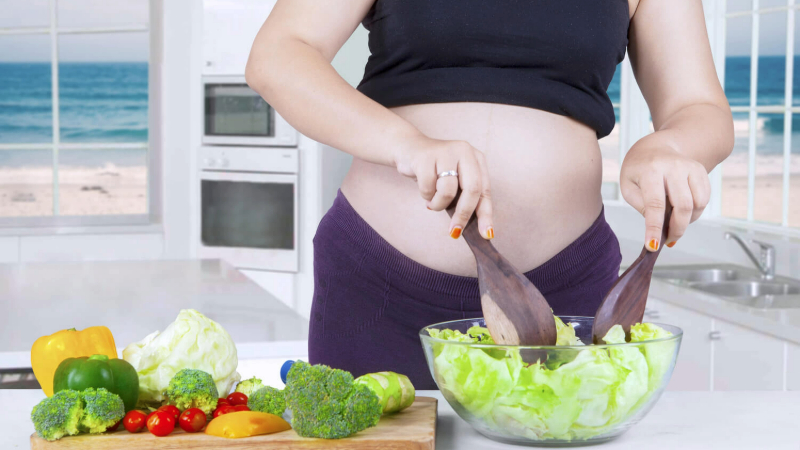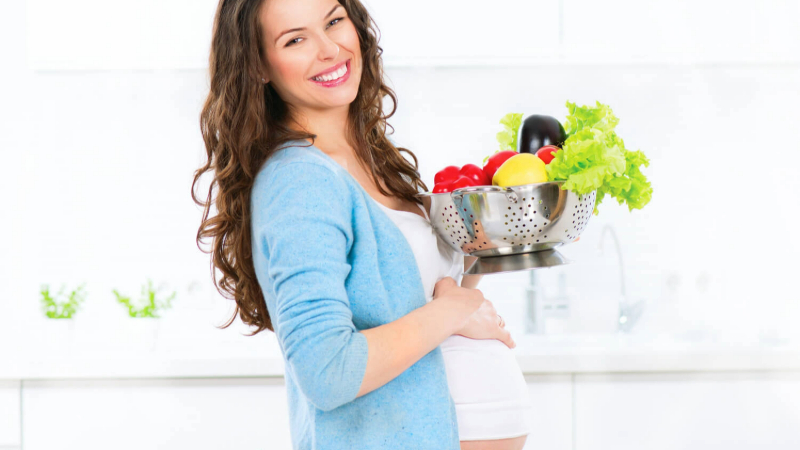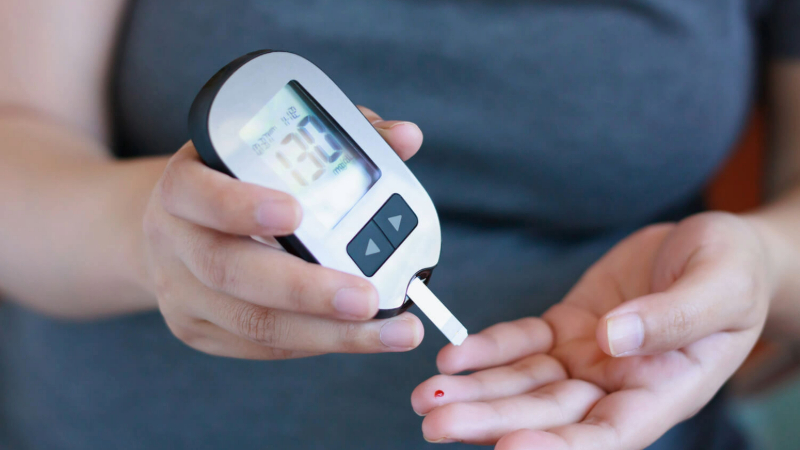
Pregnancy is a happy phase in any woman’s life where she eats without worrying about calories as it is popularly believed that “a pregnant woman eats for two”. So she indulges herself in all kinds of food items that she craves for during pregnancy. But the sad news is, if the pregnant woman is diagnosed with diabetes during pregnancy, this same happy phase turns out to be more serious and troublesome. This is where the Indian diet plan for pregnancy with gestational diabetes comes into the picture. With changing lifestyles, gestational diabetes or high glucose during pregnancy is becoming more has become common. Find out the Indian diet plan for pregnancy with gestational diabetes.
Nowadays about 6 to 8 percent of pregnant women are diagnosed with diabetes during pregnancy these days. Experts predict that this will increase to 8 to 10 percent shortly. Remember, nutritional deficiency can bring about many complications during pregnancy. Keep reading to learn more about the right diabetic diet during pregnancy that a pregnant woman should follow.
Video of Top 12 Tips to Manage Gestational Diabetes With Indian Diet Plan
Meal Planning for Pregnant Women with Diabetes
The good news is that if a pregnant woman strictly follows the diabetic diet designed for her, she can definitely keep the harmful effects of diabetes at bay and have an uncomplicated pregnancy and a healthy baby (1). Follow these guidelines for your meal plan during pregnancy:
1. Low Glycemic Index for a Diabetic Diet
The glycemic index (GI) indicates a number. It shows how fast your body changes the carbs in that food into glucose (2). An interesting fact is that two foods with the same amount of carbohydrates can have a different glycemic index.
The smaller the number, the less will be the impact of that food on your blood sugar. The lower the index, the slower the digestion takes place, therefore, the blood sugar levels will increase slowly and steadily (3). The food with glycemic index:
- 55 or less is considered as low (good)
- 56- 69 is considered as a medium
- 70 or higher is considered as high (bad)
Therefore, before buying any food or drink, look for the glycemic index on the label.
2. Low Glycemic Load in Diabetic Diet
The glycemic load (GL) of food is a number that tells how much a particular food item when consumed will spike a person’s blood glucose level (4). We have to multiply the GI of the food by the number of carbohydrate grams in a single serving and then divide the given number by 100.
- Glycemic Load between 1 and 10 is low
- A GL between 11 to 19 is considered moderate
- Glycemic Load which is 20 or higher is considered high
For those with diabetes, you want your diet to have low values of GL.(5)
Table 1: Glycaemic Load and Glycaemic Index of Different Food Sources (6)
|
Food Sources |
Net Carbohydrates |
Glycemic Index | Glycemic Load |
| Peanuts (113g) | 15 | 14 | 2 |
| Bean sprouts (1 cup-100g) | 4 | 25 | 1 |
| Grapefruit (1/2 large- 166 g) | 11 | 25 | 3 |
| Pizza (2 slices) | 42 | 30 | 13 |
| Low-fat Yogurt (1 cup) | 47 | 33 | 16 |
| Apples (1 medium) | 16 | 38 | 6 |
| Spaghetti (1 cup- 140g) | 38 | 42 | 16 |
| Carrots (1 large – 72g) | 5 | 47 | 2 |
| Oranges (1 medium- 131g) | 12 | 48 | 6 |
| Bananas (1 large – 136g) | 27 | 52 | 14 |
| Potato Chips (1 big packet – 114g) | 55 | 54 | 30 |
| Snickers Bar (1 bar- 113g) | 64 | 55 | 35 |
| Brown Rice (1 cup – 195g) | 42 | 55 | 23 |
| Honey (1 tbsp) | 17 | 55 | 9 |
| Oatmeal (1 cup- 234g) | 21 | 58 | 12 |
| Ice cream (1 cup -72g) | 16 | 61 | 10 |
| Macaroni and Cheese (1 serving – 166g) | 47 | 64 | 30 |
| Raisins (1 small box – 43g) | 32 | 64 | 20 |
| White Rice (1 cup- 186g) | 52 | 64 | 33 |
| Sugar (1 tbsp) | 12 | 68 | 8 |
| White Bread (1 slice) | 14 | 70 | 10 |
| Watermelon (1 cup-154g) | 11 | 72 | 8 |
| Popcorn (2 cups- 64g) | 10 | 72 | 7 |
| Baked Potatoes (173g) | 33 | 85 | 28 |
| Glucose (50g) | 50 | 100 | 50 |
Insulin Index
The insulin index refers to the capacity of the food to raise the level of insulin after 2 hours of intake (7).
Table 2: Food Insulin Index for Different Food Sources (8)
| Food Insulin Index (FII) | ||
| Food | Serving size | Food Insulin Demand |
| Chicken | 130 grams | 20 |
| White Fish | 130 grams | 30 |
| Navy Beans | 1 cup | 22 |
| Poached Eggs | 2 large | 14 |
| White Bread | 2 slices | 53 |
| White Rice | 1 cup | 46 |
| Skim Milk | 1 cup | 23 |
| Cottage Cheese, Low Fat (2.5% fat) | 1 cup (240 grams) | 42 |
| Leafy Vegetables | 1 cup | 0 |
| Avocado | ¼ | 2 |
| Olive/ Coconut Oil | 1 tbsp | 2 |
| Banana, small | 1 piece | 23 |
| Orange | 1 medium | 11 |
| Broccoli steamed | 1 cup (156 g) | 5 |
9 Super Tips for The Indian Diet Plan for Pregnancy With Gestational Diabetes

We all know that a proper diet plays a major role in managing diabetes. Women with diabetes during pregnancy ought to meet an authorized nutritionist to design the best diet for them. This ensures she gets proper nutrition for herself and the baby growing inside her.
Here are 9 super tips to remember while planning a diet for pregnancy with gestational diabetes:
1. Carbs Can be Found in Healthy Food As Well
Carbs are not only found in food with processed sugars like soft drinks, but also in food containing natural sugars like milk, fruits, yogurt, etc (9).
2. Include Greek Yogurt in a Diabetic Diet
Preferably have Greek yogurt, which is all the rage right now for all the good reasons. Greek yogurt is a naturally cultured yogurt, which is higher in protein, lower in carbs than regular yogurt, and rich in calcium, and has probiotics, the good bacteria that can help in digestion during pregnancy (10).
3. Stick to Recommended Carbs in Diabetic Diet
If you eat high-carb food in one meal and then avoid it in other meals, it will still raise your blood sugar level. Therefore, always stick to recommended carbs in your diet.
4. Don’t Skip Meals
Never skip a meal as that can make you feel very hungry and you tend to eat more during the next meal (11).
5. Eat Small Meals
Eat small meals, preferably every 2 to 3 hours. You can have a healthy snack, salad, and fruits in between. However, make sure at least one and a half to two hours of gaps are maintained between snack and the next meal.
6. Opt Brown Rice Over White
If you are a rice eater, always prefer brown rice to white rice due to its low GI (12).
7. Never Hesitate to Clear Doubts
If you feel uncomfortable after eating any food item, stop consuming that and speak to your doctor about it.
8. Restrict the Intake of Salt
Consuming more salt can lead to water retention and further increase swelling during pregnancy (13). It can also lead to gestational hypertension, which, along with gestational diabetes, can be very risky for both the mother and the baby.
9. Depend on Homemade Foods
Try to consume home-cooked food as much as possible. If you are buying ready-to-eat packaged meals or drinks, make sure to double-check the manufacturing and expiry dates and also the list of ingredients to ensure it does not have added sugar.
Some Do’s and Don’ts In Your Diabetic Diet During Pregnancy

During pregnancy, there are specific do’s and don’ts that you have to follow to ensure that you and the baby growing inside you stay healthy.
-
- Include less starchy vegetables as they are rich in fiber, minerals, and vitamins.
- Include protein-rich food like eggs, seeds, nuts, fish, meat, etc. These foods not only make you feel full but also will not spike your glucose levels.
- Select lean meat and dairy products with low fat.
- Drink 9 to 12 glasses of water every day and keep yourself well hydrated.
- Eat fresh fruits rather than fruit juices.
- Include two servings of fruits and vegetables every day in your meals as they are loaded with fiber, vitamins, and minerals.
- If you are a strict vegetarian then include dals, cereals, pulses, nuts, and whole grains in your diabetic diet as a source of protein.
- Don’t eat deep-fried food.
- Never eat junk food. (14)
- Don’t drink soft drinks (15).
- Reduce the intake of oil and butter (16).
Sample Indian Diet Plan for Pregnancy with Gestational Diabetes

Here is a sample diabetic diet menu during pregnancy that ensures the required nourishment for the baby and controls the glucose level of the pregnant woman. Eating on time and ensuring enough gap between meals are equally important when it comes to a diabetic diet.
Once you have a general idea of how to select the food, you can make appropriate changes to the food items as per your doctor’s advice and also keep monitoring your sugar levels.
Early Morning (6:30 to 7 am)
- Start the day with a 250 ml glass of low-fat milk (without sugar). If you prefer a flavored one, you can add cardamom, cinnamon, or kesar.
- You can also have dry stuff like whole-grain rusk or digestive biscuits (sugar-free). Limit it to just 1-2 pieces.
- Consuming overnight-soaked 4 to 5 almonds will provide protein and omega 3 for a good head start.
Breakfast (8:30 to 9 am)
- Any of these – Vegetable upma/ three idlis/ two medium-sized plain dosa/ two vegetable stuffed paratha or 2 medium pieces vegetable stuffed Moong Dal or Besan Chila
- A bowl of sambar/ green chutney (prefer not to add coconut) / low-fat curd as an accompaniment
- One boiled egg (optional) (If veg prefer to take 1 small katori chena without sugar)
Mid Morning (11 am)
- One medium-sized fruit. Black Jamun, pear, guava, musambi, pomegranate, etc. are perfect to have during this time.
- You can have tender coconut water or a glass of lemonade (fresh lemon water).
Lunch (12:30 to 1 pm)
- A small bowl of vegetable salad.
- 2 medium-sized whole wheat or multigrain chapattis and three tablespoons of pulao made out of brown rice or just three medium-sized plain chapattis.
- 1 medium katori of Dal tadka / fish curry/ chicken curry/ sambar/ rasam (less oily and spicy preparation)
- 1 medium katori Stir-fried vegetables/ egg bhurji/ paneer with less oily gravy
- One teaspoon ghee
Mid Afternoon (2:30 pm)
- 1 cup Chaas with 2-3 walnuts
Evening (4 to 4:30 pm)
- One glass of milk (if you are not willing to take, add 1 fruit)
- Snacks –1 piece grilled cheese sandwich/ 1 medium multigrain french toast/ 2-3 pieces khakhras
- Peanuts/ Roasted Chana/ Makhanas (6-7 numbers; portion size – the size of your ring finger)
Late Evening (6 to 6:30 pm)
- A bowl of cereal with milk. Muesli, wheat flakes, oat flakes without sugar etc. or a bowl of steamed sprouts
Pre-Dinner (7:30 to 8 pm)
- 1 ½ katori Vegetable soup/ chicken soup
Dinner (8 to 8:30 pm)
- Two medium-sized multigrain chapattis/ 3 idlis/ three tablespoons of brown rice
- Paneer mutter/ sambar/ mixed vegetable curry/ moong dal/ palak paneer
- One teaspoon ghee
Bedtime (at least one and a half hours after dinner)
- A glass of low-fat warm milk
After meals make sure to take a 15 minutes walk. Consider it also as a part of your diet. You can make necessary changes to the items mentioned above according to your taste and preference and in consultation with a nutritionist. Here are a few more tips:
- Adding fiber to the chapati or roti dough ensures the required fiber intake.
- You can add a handful of soaked soybeans while making batter for idly or dosa.
Some Recommended Low Sugar Indian Snacks to Include in Diabetic Diet
The following list includes several food items that contain less sugar and are considered good for pregnant women:
- Whole grain plain dosa
- Wheat and methi khakhra
- Ragi roti
- Mint chutney as dip or spread
- Digestive biscuits
Hope this Indian diet plan for pregnancy with gestational diabetes is helpful. No matter what you want to eat, make sure that you consult your doctor or a nutritionist first. Some food items that agree well with another pregnant woman may not be good for you. So be careful and eat what is recommended.
FAQ’s
1. Can I Follow a Diet to Control Gestational Diabetes?
Yes, by all means. This can help manage the food you eat. Opt for foods rich in fiber and low in glycemic index.
2. What Foods Can Help Control Gestational Diabetes?
Timely food, is not rich in carbs can help. Ensure you do not eat anything overly sweet. Greek yogurt can also be part of a regular diet.
3. Can I Eat Outside Food When I Have Gestational Diabetes?
Yes, in moderation. Eating once in a while is ok. Ensure you have control over the quantity and choose the foods carefully.
4. Can I Eat Refined Flour Products if I Have Gestational Diabetes?
No, it is not safe. Refined flour can cause your sugar levels to spike. This is not recommended for women suffering from gestational diabetes.
References
- Amy Leung Hui, Gustaaf Sevenhuysen, Dexter Harvey, Elizabeth Salamon, Barriers and coping strategies of women with gestational diabetes to follow dietary advice, Women and Birth, Volume 27, Issue 4, 2014 –https://www.sciencedirect.com/science/article/abs/pii/S1871519214000663#
- Mahajan, A., Donovan, L.E., Vallee, R. et al. Evidenced-Based Nutrition for Gestational Diabetes Mellitus. Curr Diab Rep 19, 94 (2019) – https://link.springer.com/article/10.1007/s11892-019-1208-4#
- Shannan M. Grant, Thomas M.S. Wolever, Deborah L. O’Connor, Rosane Nisenbaum, Robert G. Josse,
Effect of a low glycaemic index diet on blood glucose in women with gestational hyperglycaemia,
Diabetes Research and Clinical Practice, Volume 91, Issue 1, 2011 – https://www.sciencedirect.com/science/article/abs/pii/S016882271000447X# - Ma W-J, Huang Z-H, Huang B-X, et al. Intensive low-glycaemic-load dietary intervention for the management of glycaemia and serum lipids among women with gestational diabetes: a randomized control trial. Public Health Nutrition. 2015;- https://www.cambridge.org/core/journals/public-health-nutrition/article/intensive-lowglycaemicload-dietary-intervention-for-the-management-of-glycaemia-and-serum-lipids-among-women-with-gestational-diabetes-a-randomized-control-trial/
- Eleazu CO. The concept of low glycemic index and glycemic load foods as panacea for type 2 diabetes mellitus; prospects, challenges and solutions. Afr Health Sci. 2016 Jun – https://pmc.ncbi.nlm.nih.gov/articles/PMC4994556/#
- Fiona S. Atkinson, Kaye Foster-Powell, Jennie C. Brand-Miller; International Tables of Glycemic Index and Glycemic Load Values: 2008. Diabetes Care 1 December 2008 – https://diabetesjournals.org/care/article/31/12/2281/24911/
- Mirmiran, P., Esfandiari, S., Bahadoran, Z. et al. Dietary insulin load and insulin index are associated with the risk of insulin resistance: a prospective approach in tehran lipid and glucose study. J Diabetes Metab Disord 15, 23 (2015) – https://link.springer.com/article/10.1186/s40200-016-0247-5#
- Jiansong Bao, Vanessa de Jong, Fiona Atkinson, Peter Petocz, Jennie C Brand-Miller, Food insulin index: physiologic basis for predicting insulin demand evoked by composite meals2, The American Journal of Clinical Nutrition, Volume 90, Issue 4, 2009 – https://www.sciencedirect.com/science/article/pii/S0002916523232657#
- Zhang Hehua , Xia Yang , Zhang Xiangsu , Chang Qing , Zhao Yuhong, Carbohydrate intake quality and gestational diabetes mellitus, and the modifying effect of air pollution, Frontiers in Nutrition, 9,2023 – https://www.frontiersin.org/journals/nutrition/articles/10.3389/fnut.2022.992472/full
- Seyed-Amir Tabatabaeizadeh, Niayesh Tafazoli, Effect of probiotic yogurt on gestational diabetes mellitus: A systematic review and meta-analysis, Diabetes & Metabolic Syndrome: Clinical Research & Reviews, Volume 17, Issue 4, 2023 – https://www.sciencedirect.com/science/article/abs/pii/S1871402123000541#
- Rachael Si Xuan Loo, Fabian Yap, Chee Wai Ku, Yin Bun Cheung, Kok Hian Tan, Jerry Kok Yen Chan, See Ling Loy, Maternal meal irregularities during pregnancy and lifestyle correlates, Appetite, Volume 168, 2022 – https://www.sciencedirect.com/science/article/pii/S0195666321006541#
- Abdul Rahim AF, Norhayati MN, Zainudin AM. The effect of a brown-rice diets on glycemic control and metabolic parameters in prediabetes and type 2 diabetes mellitus: a meta-analysis of randomized controlled trials and controlled clinical trials. PeerJ. 2021 May 26 – https://pmc.ncbi.nlm.nih.gov/articles/PMC8164413/#
- Mao C, Liu R, Bo L, Chen N, Li S, Xia S, Chen J, Li D, Zhang L, Xu Z. High-salt diets during pregnancy affected fetal and offspring renal renin-angiotensin system. J Endocrinol. 2013 Jun 1 – https://pmc.ncbi.nlm.nih.gov/articles/PMC4406098/#
- Dominguez LJ, Martínez-González MA, Basterra-Gortari FJ, Gea A, Barbagallo M, Bes-Rastrollo M. Fast food consumption and gestational diabetes incidence in the SUN project. PLoS One. 2014 Sep 12;9 – https://pmc.ncbi.nlm.nih.gov/articles/PMC4162567/#
- Mikel Donazar-Ezcurra, Cristina Lopez-del Burgo, Miguel A. Martinez-Gonzalez, Francisco J. Basterra-Gortari, Jokin de Irala, Maira Bes-Rastrollo, Soft drink consumption and gestational diabetes risk in the SUN project,
Clinical Nutrition, Volume 37, Issue 2, 2018- https://www.sciencedirect.com/science/article/abs/pii/S0261561417300559# - Mustad VA, Huynh DTT, López-Pedrosa JM, Campoy C, Rueda R. The Role of Dietary Carbohydrates in Gestational Diabetes. Nutrients. 2020 Jan 31 – https://pmc.ncbi.nlm.nih.gov/articles/PMC7071246/#

